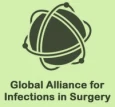Fournier’s gangrene is an acute, rapidly progressive, and potentially fatal, infective necrotizing fasciitis affecting the external genitalia, perineal or perianal regions, which commonly affects men, but can also occur in women and children.
In 1764, Baurienne originally described an idiopathic, rapidly progressive soft-tissue necrotizing process that led to gangrene of the male genitalia. However, Jean-Alfred Fournier, a Parisian venereologist, is more commonly associated with this disease, which bears his name. In one of Fournier’s clinical lectures in 1883, he presented a case of perineal gangrene in an otherwise healthy young man.
Due to the complexity of fascial planes, this infection may extend up to the abdominal wall, down into the thigh, into the perirectal and gluteal spaces, and occasionally, into the retroperitoneum. The origin of the infection is identifiable in the majority of cases and is predominantly from anorectal, genito-urinary or local cutaneous sources.
Mainly associated with men and those over the age of 50, Fournier’s gangrene has been shown be more common in patients with diabetes. The relatively high incidence of Fournier’s gangrene in patients with diabetes has been attributed to their small vessel disease, defective phagocytosis, diabetic neuropathy and immunosuppression, all of which can be exacerbated by poor hygiene when present. Other risk factors include age, malignancy, chronic steroid use, cytotoxic drugs, lymphoproliferative disease, malnutrition and human immunodeficiency virus (HIV) infection. It has a mortality rate that reaches the 20–50% in some contemporary series.
Diagnosis is based on clinical signs and physical examination. Imaging may be needed to confirm clinical suspicions and to help in identifying the extent of the soft tissue involvement, particularly in the peri-rectal and retroperitoneal planes. Fournier’s Gangrene Severity Index (FGSI) is a standard score for predicting outcome in patients with Fournier gangrene and is obtained from a combination of physiological parameters at admission including temperature, heart rate, respiration rate, sodium, potassium, creatinine, leukocytes, haematocrit and bicarbonate. A FGSI score above 9 has been demonstrated to be sensitive and specific as a mortality predictor in patients with Fournier’s gangrene.
Ultrasound findings include a thickened, edematous scrotal wall containing hyperechoic foci that demonstrate reverberation artifacts, causing ‘dirty’ shadowing which represents gas within the scrotal wall. Computed tomography plays an important role in the diagnosis of Fournier’s gangrene guiding surgeons in appropriate surgical treatment. CT findings include asymmetric fascial thickening, fluid collections, abscess formation, fat stranding around involved structures and subcutaneous emphysema. The underlying cause of Fournier’s gangrene, such as a perianal abscess, a fistulous tract, or an intraabdominal or retroperitoneal infectious process, may also be demonstrated by CT. It can help to evaluate both the superficial and the deep fascia, and to differentiate Fournier’s gangrene from less aggressive cellulitis, which may appear similar to Fournier’s gangrene on physical examination.
The most critical factors for reducing mortality from Fournier’s gangrene are early recognition and urgent operative debridement.
Surgical debridement must be aggressive to halt progression of infection. Cultures of infected fluid and tissues should be obtained during the initial surgical debridement and the results used to tailor specific antibiotic management. Radical surgical debridement of the entire affected area should be performed, continuing the debridement into the healthy-looking tissue. In the setting of Fournier’s gangrene, diverting colostomy has been demonstrated to improve the outcome and the need for fecal diversion depends upon severity of the disease. It helps in decreasing sepsis by minimizing bacterial load in the perineal wound thus controlling infection. Diverting colostomy does not eliminate the necessity of multiple debridements, nor reduces the number of these procedures. Recently rectal diversion devices have been marketed. They are silicone catheters designed to divert fecal matter in patients with diarrhea, local burns, or skin ulcers. The devices protect the wounds from fecal contamination and reduce in the same way a colostomy does, both the risk of skin breakdown and repeated inoculation with colonic microbial flora.
Postoperative wound care starts with meticulous haemostasis. Non-adherent compressive dressings should be applied, followed by repeat wound inspection in ≤ 24 hours. Any patient with extensive necrosis or who is considered to have not be adequately debrided at the initial operation should be returned to the operating room in 24–48 hours for a second look. Further debridement should be repeated until the infection is controlled.
Fournier’s gangrene is nearly universally poly-microbial in origin. An aggressive broad-spectrum empiric antimicrobial therapy should initially be selected to cover Gram-positive, Gram-negative, and anaerobic organisms until culture-specific results and sensitivities are available.
In some patients Fournier’s gangrene may present with a fulminant course and may be associated with great morbidity and high case-fatality rates, especially when they occur in conjunction with toxic shock syndrome. After initial debridement, and early antibiotic therapy, patients require early intensive care for haemodynamic and metabolic support. Patients may loss fluids, proteins and electrolytes from a large surgical wound. In addition hypotension is caused by vasodilation induced by the systemic inflammatory response syndrome to infection. Fluid resuscitation and analgesia are the mainstays of support for patients with advanced sepsis usually combined with vasoactive amines associated with mechanic ventilation.
The delay in diagnosis and higher FGSI may be responsible for worsening of prognosis and mortality in Fournier’s gangrene. Early diagnosis, aggressive surgical debridement, appropriate antibiotic therapy and hemodynamic support may improve prognosis.
Reference
Sartelli M, Malangoni MA, May AK, Viale P, Kao LS, Catena F, et al. World J Emerg Surg. 2014 Nov 18;9(1):57.
